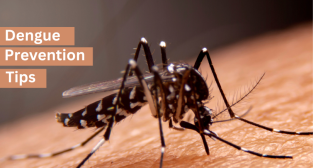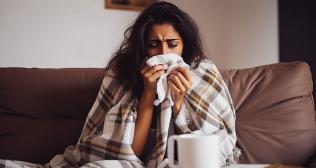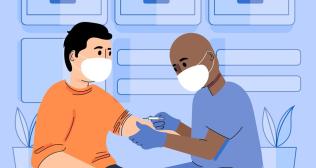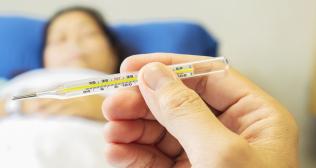
New COVID Variant 2025 - Symptoms, Diagnosis, Risk & Effective Treatment
It’s 2025, and while the world has moved forward, COVID-19 continues to remind us of its unpredictable nature. Just when we think it’s behind us, a new variant emerges—more infectious, harder to detect, and bringing new challenges. India is witnessing a steady rise in COVID cases again, driven by a newly evolved sub-lineage of Omicron. While symptoms are generally milder, this is not the time for complacency.
If you or your loved ones are feeling under the weather, knowing the latest COVID variant symptoms, testing methods, treatment, and prevention tips is the key to staying protected. This guide covers everything you need to know to stay one step ahead.
Common Symptoms of the New COVID Variant (2025):
The symptoms are mostly mild but easily confused with seasonal flu or allergies. Watch out for:
- Low-grade fever or chills
- Mild sore throat or throat irritation
- Runny or blocked nose
- Dry cough that lingers
- Fatigue and mild headache
- Gastro symptoms like nausea, appetite loss, or diarrhea
- Muscle aches and body pain
Pro Tip: If you’ve been in contact with a COVID-positive individual or are showing symptoms, don’t ignore it. Isolate, test, and act early.
COVID Diagnosis Methods in 2025:
Even with mild symptoms, early testing helps prevent the spread and ensures timely care.
1. Rapid Antigen Test (RAT):
Ideal for quick screening. Positive = Confirmed. Negative + symptoms? Go for PCR.
2. RT-PCR Test:
Still the gold standard for COVID detection. Highly accurate, especially for those exposed or symptomatic.
3. Multiplex PCR Test (COVID + Flu):
Helps rule out flu, COVID, or other respiratory infections—great if you’re unsure.
Tip: Always confirm a negative RAT with RT-PCR if symptoms persist.
Complications to Watch Out For:
Most recover at home, but vulnerable individuals may experience severe outcomes:
- Elderly (above 60 years)
- People with diabetes, hypertension, heart, lung, or kidney conditions
- Immunocompromised individuals (HIV, cancer, transplant patients)
- Pregnant women and young children
- Unvaccinated individuals
Long COVID remains a concern with symptoms like brain fog, breathlessness, fatigue, and digestive issues even after recovery.
Treatment Options for the New Variant:
For Mild to Moderate Cases (Home Isolation):
- Rest & hydrate
- Over-the-counter fever and pain medication
- Steam inhalation for throat/nose relief
- Monitor oxygen levels using a pulse oximeter
Seek Immediate Medical Help If:
- High fever >102°F for 3+ days
- Difficulty breathing or chest tightness
- Oxygen saturation falls below 94%
- Worsening existing health problems
Vaccination is still your best shield. Stay updated with booster shots, especially ones targeting Omicron variants.
Lifestyle Tips to Stay Safe:
- Eat immune-boosting foods – Include citrus fruits, ginger, garlic, turmeric.
- Stay physically active – Light home workouts, walking, or yoga.
- Get 7–8 hours of sleep to support your immune system.
- Avoid stress – Practice meditation or deep breathing.
- Stay connected virtually to avoid isolation-related anxiety.
Prevention is Better Than Cure – Always:
- Wash hands frequently
- Wear a mask in crowded or enclosed places
- Ventilate indoor spaces well
- Avoid unnecessary gatherings if unwell
- Stay up to date with vaccines and boosters
- Isolate if you test positive or show symptoms
Conclusion:
The emergence of the new COVID variant in 2025 is a stark reminder: the virus is evolving, and so must our awareness. With timely diagnosis, preventive care, and vaccination, we can reduce its impact on our lives and our healthcare systems. Stay informed. Stay protected. And most importantly—don’t ignore the signs.
Need medical help or COVID testing near you? Contact your nearest Fortis Healthcare center for expert guidance and safe testing facilities.
Frequently Asked Questions (FAQs)
Q1. Is the new COVID variant more dangerous than Omicron?
Not necessarily more severe, but more infectious. Stay vigilant, especially if you're in a high-risk group.
Q2. Can I get COVID again even after vaccination?
Yes, but vaccines drastically reduce the severity and risk of hospitalization.
Q3. What’s the best way to treat COVID at home?
Rest, fluids, steam inhalation, paracetamol for fever, and regular oxygen checks.
Q4. How long should I isolate if I test positive?
At least 7 days from symptom onset and 24 hours fever-free without medication.
Q5. Are children affected by the new variant?
Yes, but symptoms are typically mild. Monitor for fever, cough, or stomach issues.
Popular Searches:
Hospitals: Cancer Hospital in Delhi | Best Heart Hospital in Delhi | Hospital in Amritsar | Hospital in Ludhiana | Hospitals in Mohali | Hospital in Faridabad | Hospitals in Gurgaon | Best Hospital in Jaipur | Hospitals in Greater Noida | Hospitals in Noida | Best Kidney Hospital in Kolkata | Best Hospital in Kolkata | Hospitals in Rajajinagar Bangalore | Hospitals in Richmond Road Bangalore | Hospitals in Nagarbhavi Bangalore | Hospital in Kalyan West | Hospitals in Mulund | Best Hospital in India | Gastroenterologist in Jaipur | Cardiology Hospital in India
Doctors: Dr. Rana Patir | Dr. Rajesh Benny | Dr. Rahul Bhargava | Dr. Jayant Arora | Dr. Anoop Misra | Dr. Manu Tiwari | Dr. Praveer Agarwal | Dr. Arup Ratan Dutta | Dr. Meenakshi Ahuja | Dr. Anoop Jhurani | Dr. Shivaji Basu | Dr. Subhash Jangid | Dr. Atul Mathur | Dr. Gurinder Bedi | Dr. Monika Wadhawan | Dr. Debasis Datta | Dr. Shrinivas Narayan | Dr. Praveen Gupta | Dr. Nitin Jha | Dr. Raghu Nagaraj | Dr. Ashok Seth | Dr. Sandeep Vaishya | Dr. Atul Mishra | Dr. Z S Meharwal | Dr. Ajay Bhalla | Dr. Atul Kumar Mittal | Dr. Arvind Kumar Khurana | Dr. Narayan Hulse | Dr. Samir Parikh | Dr. Amit Javed | Dr. Narayan Banerjee | Dr. Bimlesh Dhar Pandey | Dr. Arghya Chattopadhyay | Dr. G.R. Vijay Kumar | Dr Ashok Gupta | Dr. Gourdas Choudhuri | Dr. Sushrut Singh | Dr. N.C. Krishnamani | Dr. Atampreet Singh | Dr. Vivek Jawali | Dr. Sanjeev Gulati | Dr. Amite Pankaj Aggarwal | Dr. Ajay Kaul | Dr. Sunita Varma | Dr. Manoj Kumar Goel | Dr. R Muralidharan | Dr. Sushmita Roychowdhury | Dr. T.S. MAHANT | Dr. UDIPTA RAY | Dr. Aparna Jaswal | Dr. Ravul Jindal | Dr. Savyasachi Saxena | Dr. Ajay Kumar Kriplani | Dr. Nitesh Rohatgi | Dr. Anupam Jindal |Dr. Subhaprakash Sanyal |Dr. PRIYANKA VASUDEO MOULE |Dr. Sohini Chakraborty |Dr. Akash Khandelwal |Dr. Nikhil M Kumar |Dr. Anita Mathew |Dr. Hasmukh Ravat
Specialties: Heart Lung Transplant | Haematology and BMT | Orthopedic | Cardiology Interventional | Obstetrics & Gynaecology | Onco Radiation | Neurosurgery | Interventional Cardiology | Gastroenterologist in Jaipur | Neuro Physician | Gynecologist in Kolkata | Best Neurologist in India | Liver Transfer



















